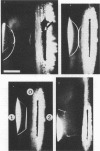Abstract
We have used photography and capacitance measurement to monitor the steps in the interaction and eventual fusion of optically black lipid bilayers (BLMs), hydrostatically bulged to approximately hemispherical shape and pushed together mechanically. A necessary first step is drainage of aqueous solution from between the bilayers to allow close contact of the bilayers. The drainage can be controlled by varying the osmotic difference across the bilayers. If the differences are such as to remove water from between the bilayers, fusion occurs after a time that depends on the net osmotic difference and the area of contact. If there is an osmotic flow of water into the space between the bilayers, fusion never occurs. In the fusion process, a single central bilayer forms from the original apposed pair of bilayers. The central bilayer may later burst to allow mixing of the two volumes originally bounded by the separate bilayer; the topological equivalent of exocytosis.
Full text
PDF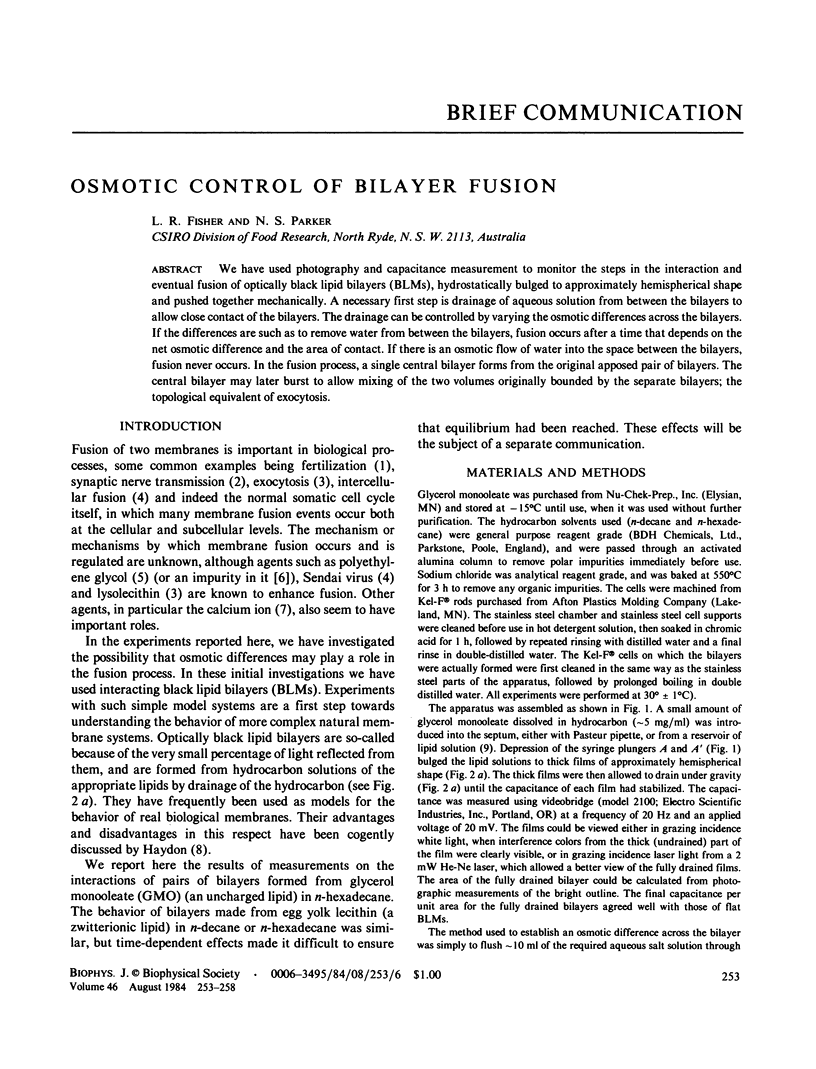
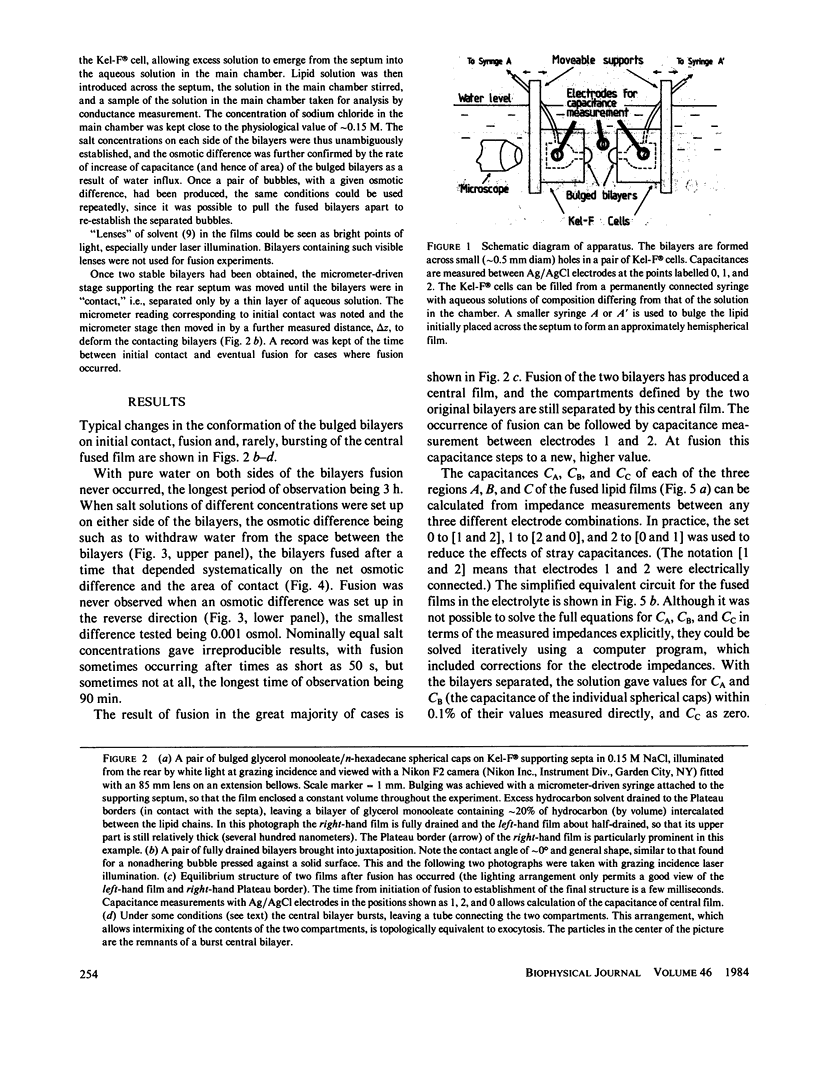
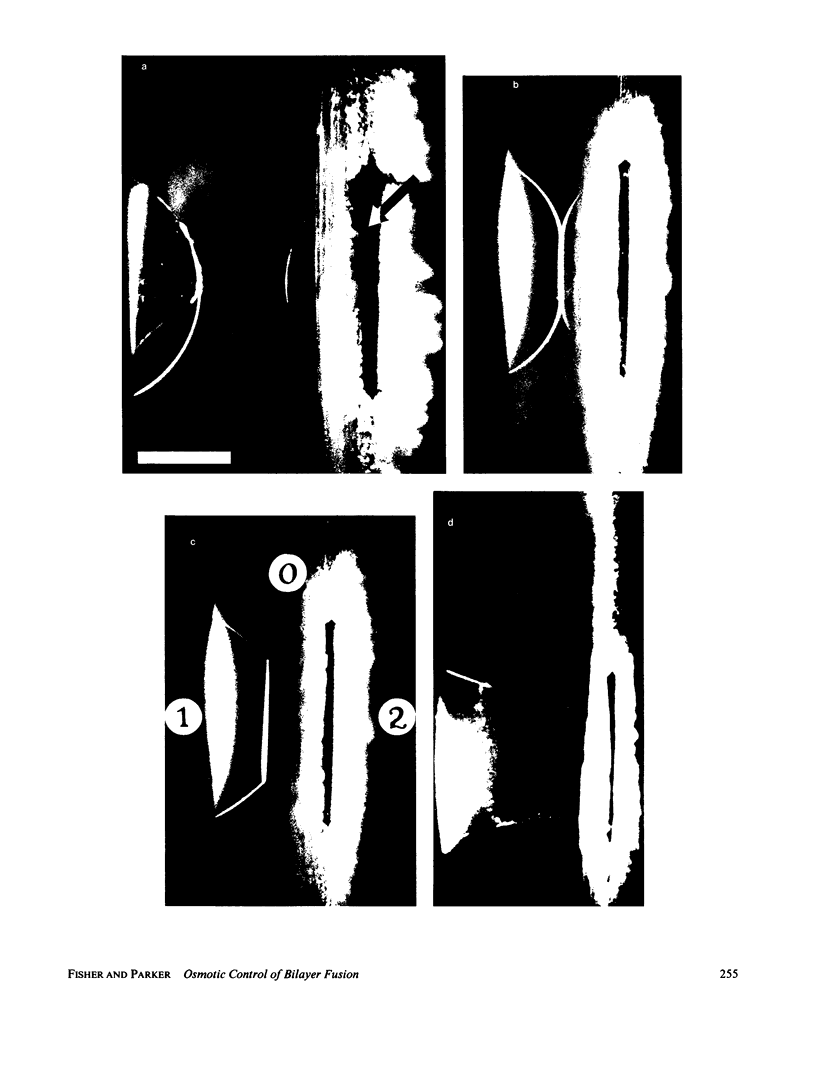
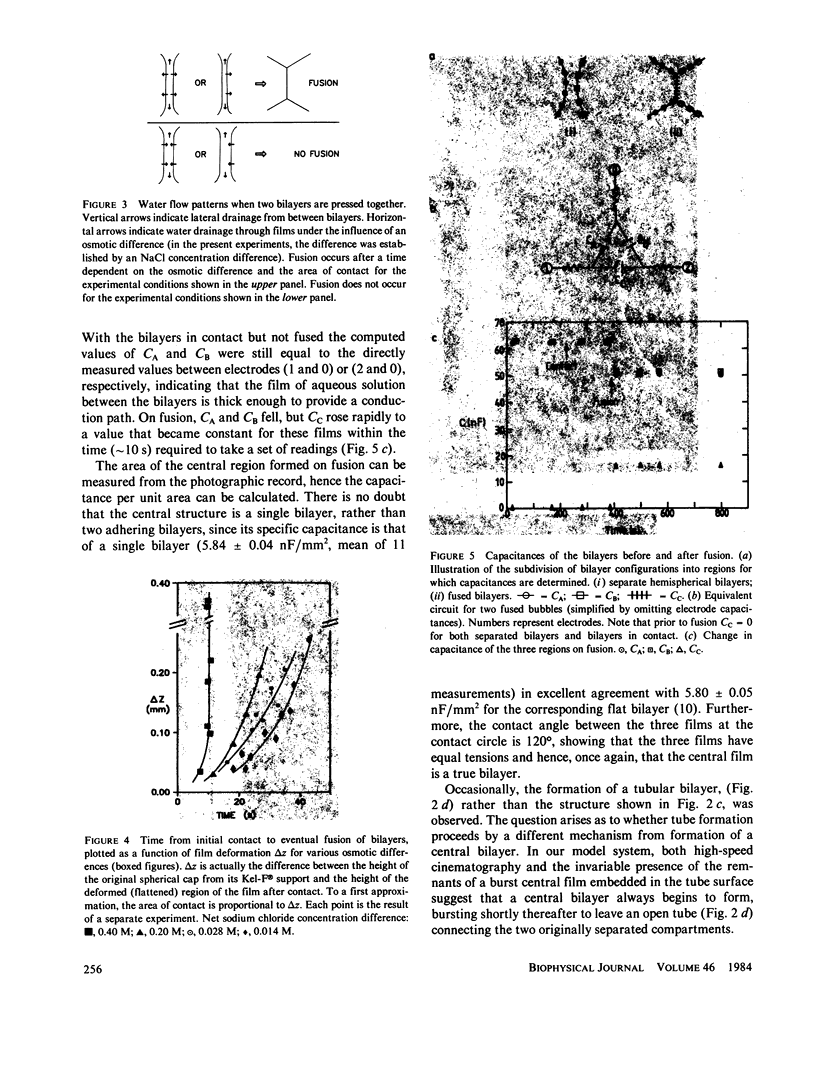
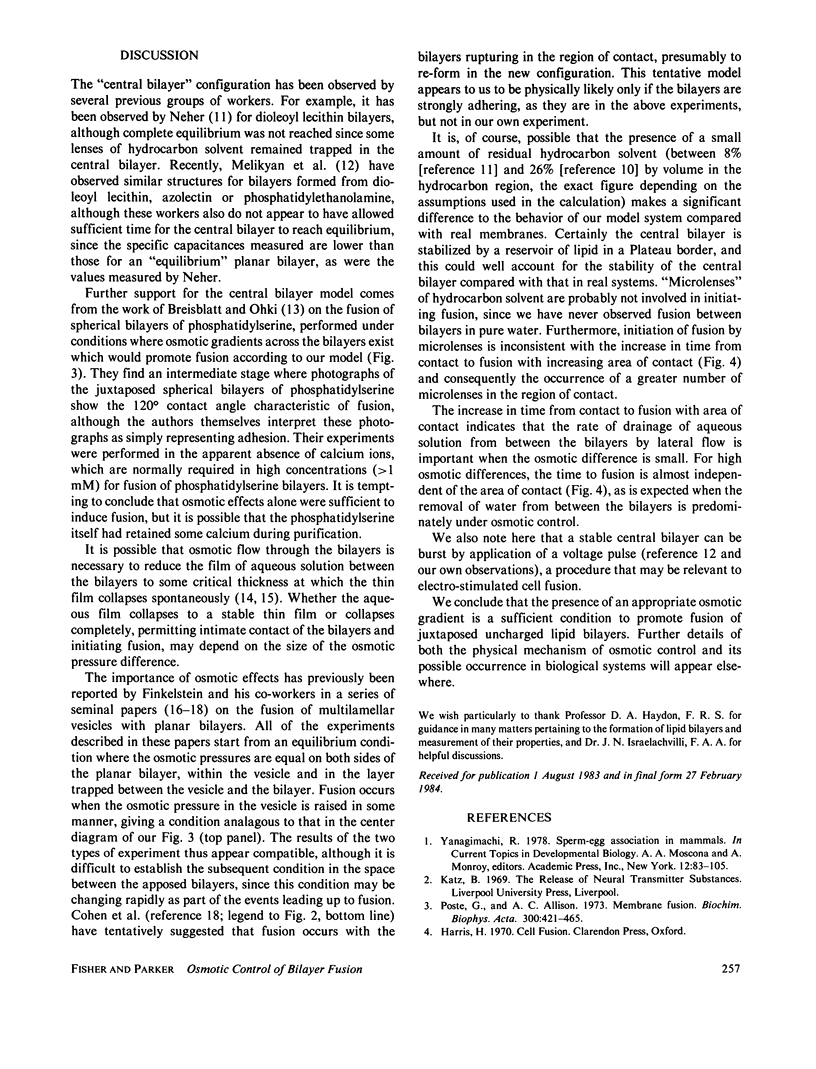
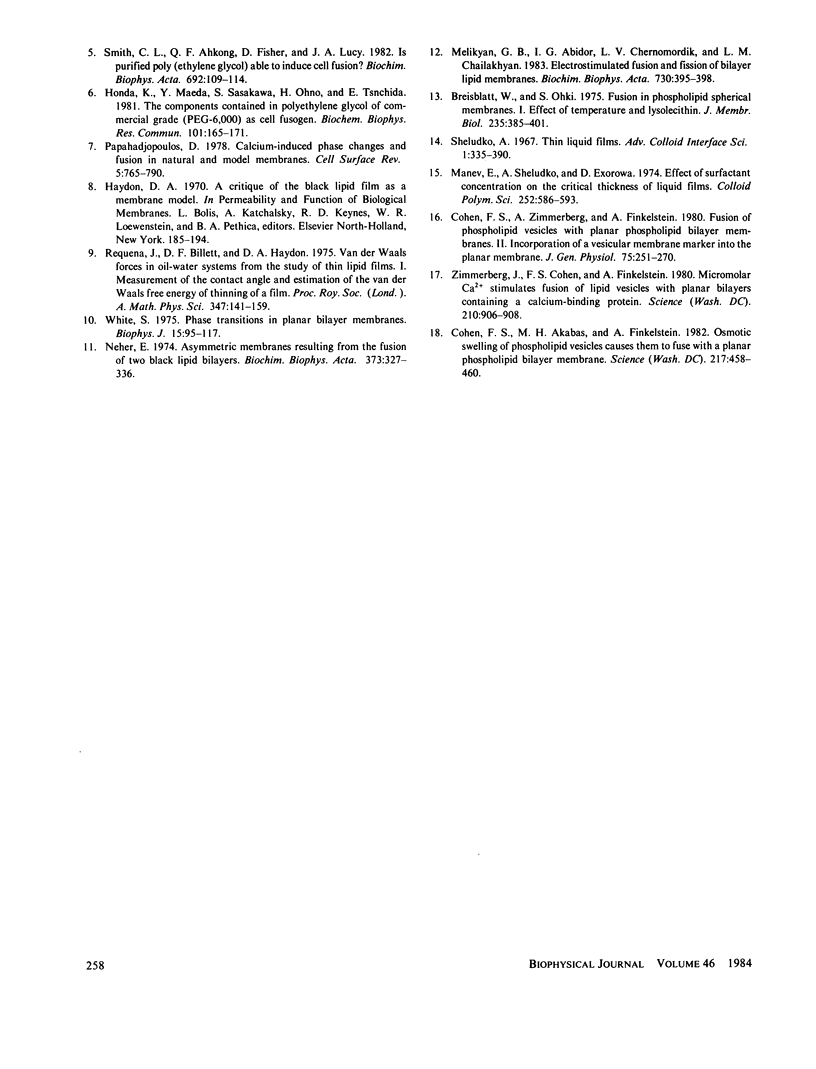
Images in this article
Selected References
These references are in PubMed. This may not be the complete list of references from this article.
- Breisblatt W., Oki S. Fusion in phospholipid spherical membranes. I. Effect of temperature and lysolecithin. J Membr Biol. 1975;23(3-4):385–401. doi: 10.1007/BF01870259. [DOI] [PubMed] [Google Scholar]
- Cohen F. S., Akabas M. H., Finkelstein A. Osmotic swelling of phospholipid vesicles causes them to fuse with a planar phospholipid bilayer membrane. Science. 1982 Jul 30;217(4558):458–460. doi: 10.1126/science.6283637. [DOI] [PubMed] [Google Scholar]
- Cohen F. S., Zimmerberg J., Finkelstein A. Fusion of phospholipid vesicles with planar phospholipid bilayer membranes. II. Incorporation of a vesicular membrane marker into the planar membrane. J Gen Physiol. 1980 Mar;75(3):251–270. doi: 10.1085/jgp.75.3.251. [DOI] [PMC free article] [PubMed] [Google Scholar]
- Honda K., Maeda Y., Sasakawa S., Ohno H., Tsuchida E. The components contained in polyethylene glycol of commercial grade (PEG-6,000) as cell fusogen. Biochem Biophys Res Commun. 1981 Jul 16;101(1):165–171. doi: 10.1016/s0006-291x(81)80025-3. [DOI] [PubMed] [Google Scholar]
- Neher E. Asymmetric membranes resulting from the fusion of two black lipid bilayers. Biochim Biophys Acta. 1974 Dec 24;373(3):327–336. doi: 10.1016/0005-2736(74)90012-1. [DOI] [PubMed] [Google Scholar]
- Poste G., Allison A. C. Membrane fusion. Biochim Biophys Acta. 1973 Dec 28;300(4):421–465. doi: 10.1016/0304-4157(73)90015-4. [DOI] [PubMed] [Google Scholar]
- Smith C. L., Ahkong Q. F., Fisher D., Lucy J. A. Is purified poly(ethylene glycol) able to induce cell fusion? Biochim Biophys Acta. 1982 Oct 22;692(1):109–114. doi: 10.1016/0005-2736(82)90508-9. [DOI] [PubMed] [Google Scholar]
- White S. H. Phase transitions in planar bilayer membranes. Biophys J. 1975 Feb;15(2 Pt 1):95–117. doi: 10.1016/s0006-3495(75)85795-x. [DOI] [PMC free article] [PubMed] [Google Scholar]
- Zimmerberg J., Cohen F. S., Finkelstein A. Micromolar Ca2+ stimulates fusion of lipid vesicles with planar bilayers containing a calcium-binding protein. Science. 1980 Nov 21;210(4472):906–908. doi: 10.1126/science.7434004. [DOI] [PubMed] [Google Scholar]



